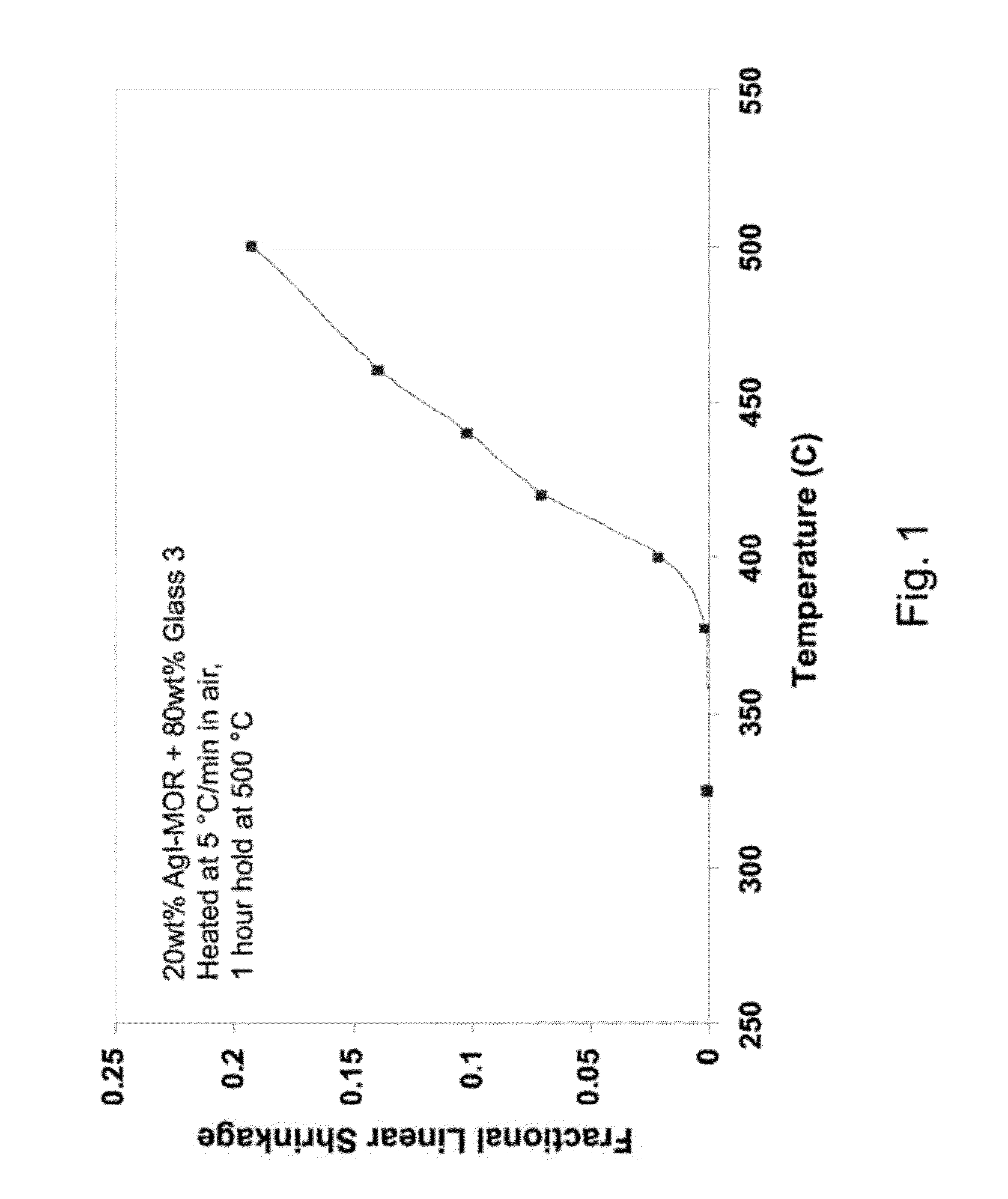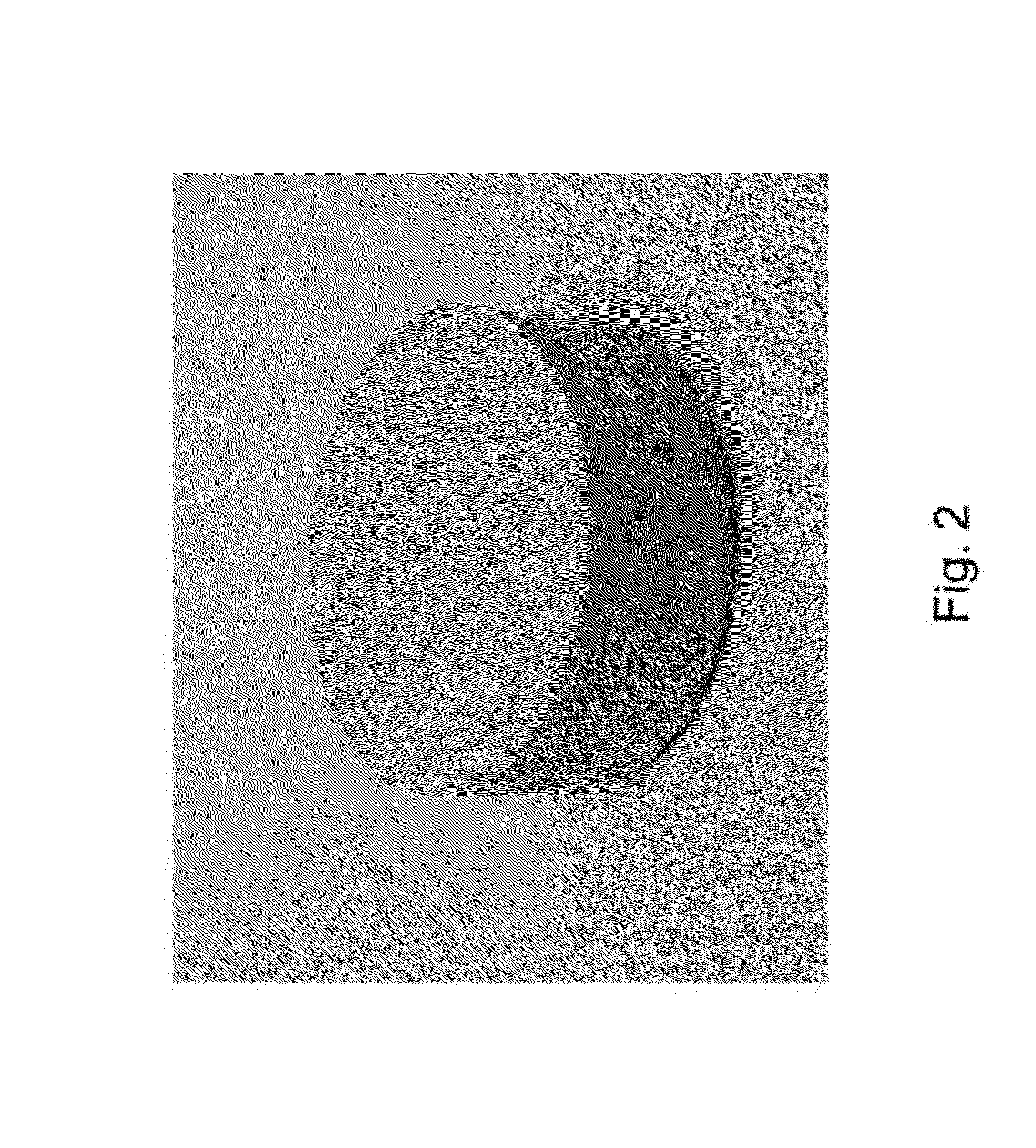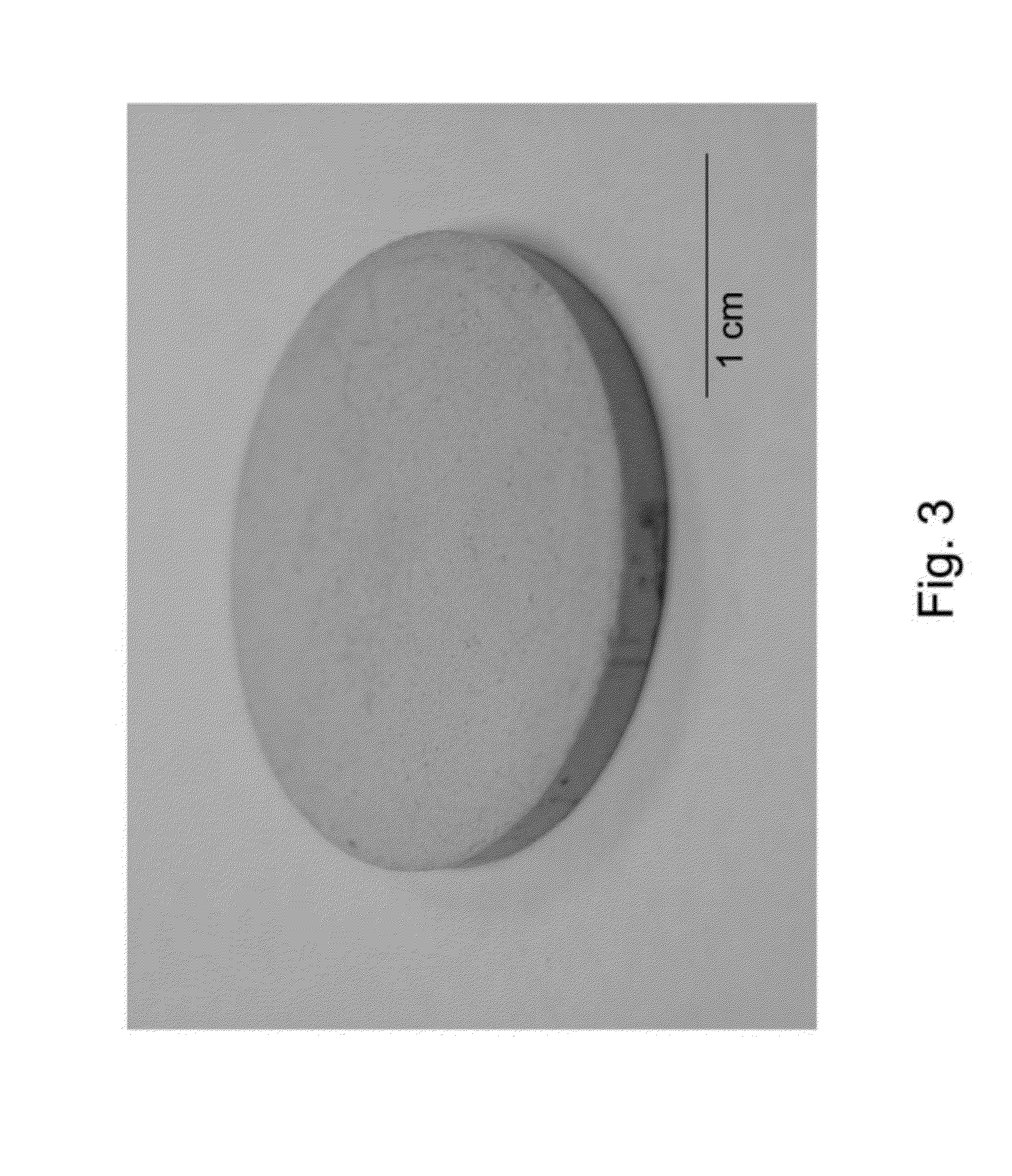Low sintering temperature glass waste forms for sequestering radioactive iodine
a technology of low sintering temperature and glass waste, which is applied in the field of sequestering and storage for the disposal of radioactive iodine waste, can solve the problems of forming powders and dust, sintering temperature cannot be so high, and not producing the expected sequestering, etc., and achieves low iodine leaching rate and strong and durable structure.
- Summary
- Abstract
- Description
- Claims
- Application Information
AI Technical Summary
Benefits of technology
Problems solved by technology
Method used
Image
Examples
Embodiment Construction
[0028]The present invention relates to materials and methods of synthesizing low-sintering-temperature (LST) glass waste forms for sequestering radioactive iodine. The terms “LST” and “LTG” both refer to low-sintering-temperature glass. Herein, we define the word “iodine” to broadly include both non-radioactive and radioactive isotopes of iodine.
[0029]Ag-Zeolite is a separations material that is highly selective for I2 over other species produced during nuclear fuel reprocessing. If all the Ag is located inside the angstrom-sized zeolite pores (through ion exchange into the zeolite), the I2 will react with it in the pores to form Ag—I. This Ag—I is chemisorbed and physisorbed in the material, and therefore bound in a stable form for long periods of time. However, if the Ag is impregnated onto the zeolite, much will be located on the bulk surface of the crystallites. Iodine reaction with the Ag will form AgI physisorbed on the surface. This is not physically trapped inside the zeolit...
PUM
| Property | Measurement | Unit |
|---|---|---|
| Temperature | aaaaa | aaaaa |
| Temperature | aaaaa | aaaaa |
| Temperature | aaaaa | aaaaa |
Abstract
Description
Claims
Application Information
 Login to View More
Login to View More - R&D
- Intellectual Property
- Life Sciences
- Materials
- Tech Scout
- Unparalleled Data Quality
- Higher Quality Content
- 60% Fewer Hallucinations
Browse by: Latest US Patents, China's latest patents, Technical Efficacy Thesaurus, Application Domain, Technology Topic, Popular Technical Reports.
© 2025 PatSnap. All rights reserved.Legal|Privacy policy|Modern Slavery Act Transparency Statement|Sitemap|About US| Contact US: help@patsnap.com



